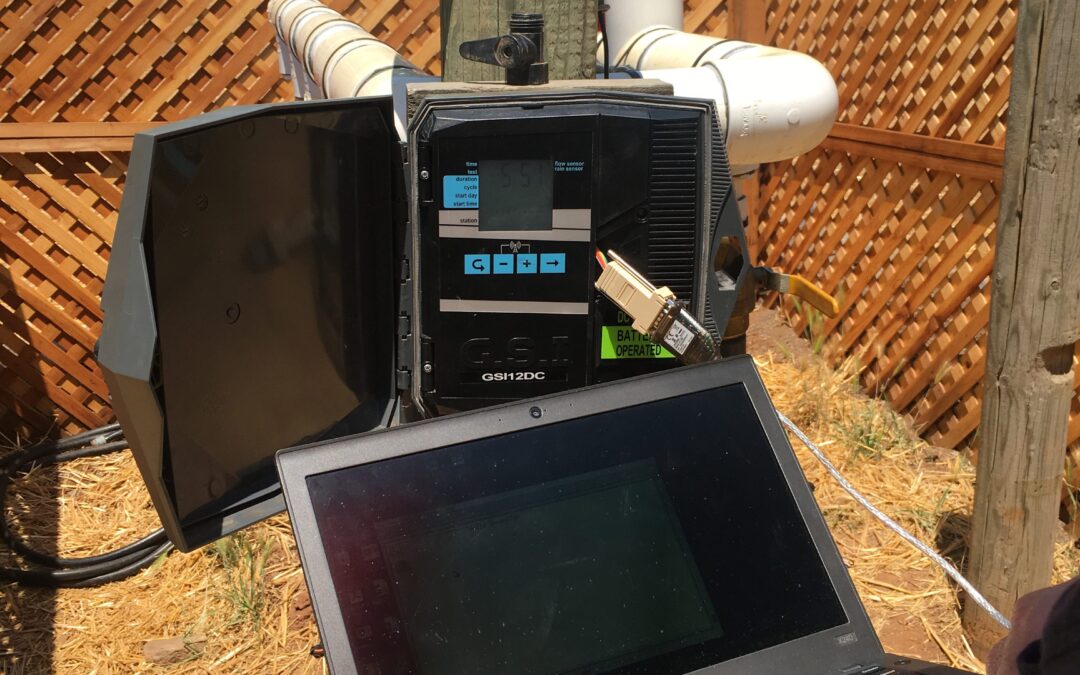
Aug 13, 2017 | Wine
Vineyard irrigation systems, even in small vineyards, are either under-featured or overly complex, and most controllers are prone to problems.
In the vineyard, risers get run over by tractors, drip hoses get chewed by coyotes, and drip emitters suddenly crack, plug, or simply pop off. In the process, a lot of water is wasted, and a lot of water intended for the grapevines doesn’t get to the grapes. Vineyards are typically irrigated by blocks or sections, each block segregated from the others for some reason – a change in grape variety, row spacing, slope of the ground, direction of sun’s arc, etc. Each block has a valve, and each valve is connected to a controller. Typical controllers are binary – they turn valves on and off.
What if you could have a controller that measures and reports to your cell phone and laptop every drop of water that moves through the system, sends you real-time alerts anytime there is a leak, and compiles the usage data into useful logs and report formats available to view or download remotely 24/7?
Such is the Israeli-based U.S.-serviced Galcon family of irrigation controllers…
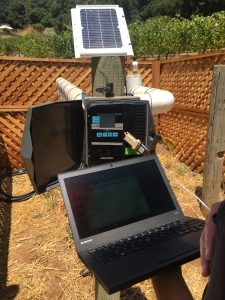
G.S.I
Last week, Roy Levinson, CEO of Galcon USA, helped me bring a Galcon unit on line for a ten-acre Syrah and Pinot vineyard near Kenwood. The process was simple – provision an Aeris Simm card. Insert into the Galcon unit, connect to the wireless network, program the controller from the laptop, and walk away.
I now get instant reports whenever water flow exceeds planned flow (a leak), adjust irrigation from my phone in real time (heat wave), turn valves on and off from phone or laptop (cold front), and deliver reports on water usage to my clients. This is the power of information in modern farming! This is by far the best way to manage scare water resources that I have seen in my career.

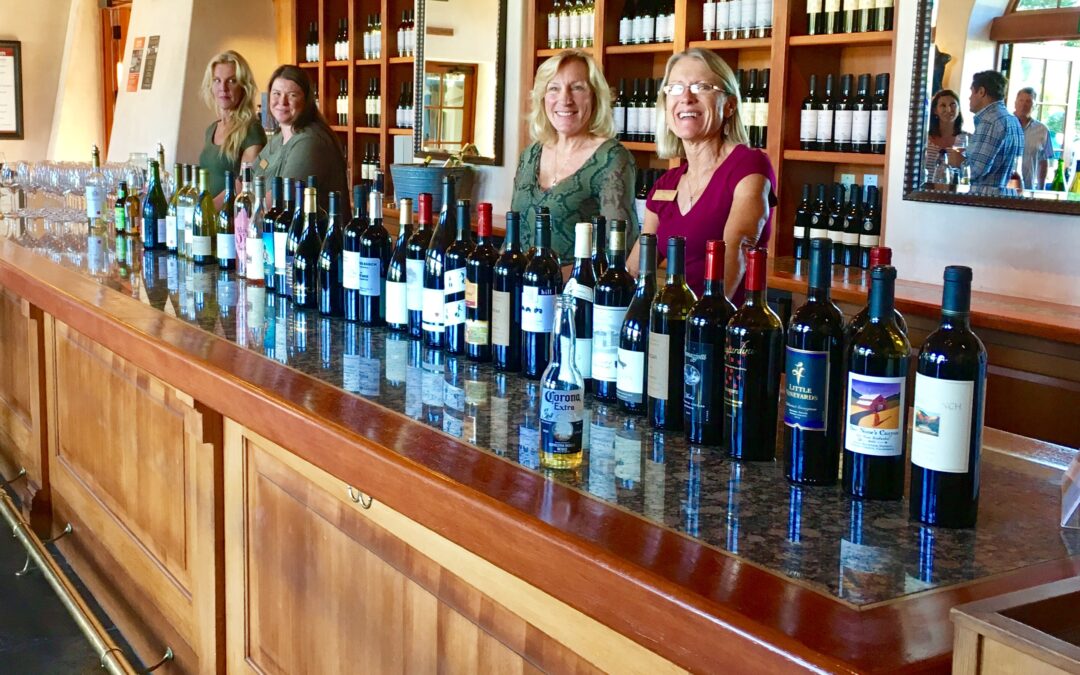
Jul 29, 2017 | Wine
It’s an old adage in the wine profession, often said with a knowing laugh, that “it takes a lot of beer to make wine.” Why? Because working out in the vineyards in the heat of the day is a really sweaty proposition. And equally, standing on your feet all day and night at the crush pad is equally exhausting and often hot. So growers and vintners drink a lot of beer during the season.
On Wednesday, July 19th, I was at the St Francis Winery in Kenwood with the Sonoma Valley Vintner’s and Growers Association for the annual member’s BBQ (and celebration of life for Christopher Silva, former President of St Francis, who very sadly passed away recently at the very young age of 52).
You’ll see in the image here that it was quite an assembly of famous Sonoma wines, well over 40 wines in total. Many were outstandingly delicious and worth close attention. But I was just coming from a vineyard meeting myself and was more in the mood for beer. So when I snapped this picture, it cracked me up to discover that a bottle of Corona beer was right there in the front! And another Corona and a Sierra Nevada in the background.
As I visited with old friends and new, I noticed that I wasn’t the only one with a beer in my wine glass; a lot of vintners and growers were also drinking a cold beer.
After the sun went down and dinner was served, attention did shift to the wines, happily.
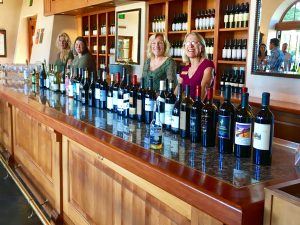
Sonoma Valley Vintners and Growers Association:
http://sonomavalleywine.com
A similar story from ClubW Juice:
http://juice.clubw.com/story/beer-the-drink-winemakers-really-love
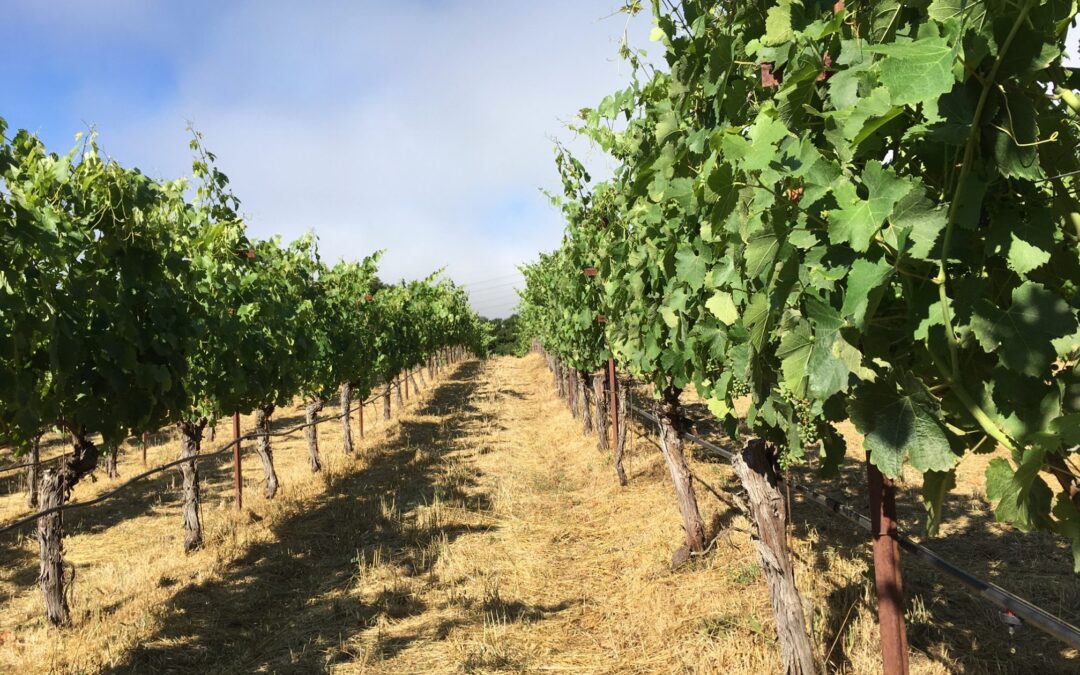
Jul 23, 2017 | Vineyard, Wine
Standing out in the middle of a vineyard in Bennett Valley yesterday, it struck me how many times I have been asked, “hey Ken, what are they growing in that vineyard over there?” I almost always have to give the same answer – “almost impossible to say.” This is because in the middle of winter, when all the leaves are gone, or in midseason, when all vines leaves and fruit clusters are green, you have to get right up close to the leaves before you can know whether it is a red or a white grape, let alone figure out the variety. Identifying grape varieties by leaf shape is called ampelography, and even the best growers and winemakers have a hard time distinguishing one variety from another based on leaf shape alone.
But not so when comparing almost any variety of grapevine to rootstock. Most rootstocks have a very unique and different shape from their wine grape variety cousins. And the best way to explain it is in a few simple pictures:
In this image below, it is plainly difficult to discern one vine from another. It may seem hard to accept, but in early July, it would be hard from this angle to know whether this is Cab, Syrah, Pinot, or Chardonnay. In fact, upon closer inspection of the fruit clusters, it is often easier to identify which variety this might be. But again, just walking by, it’s very unlikely even a pro would know unless they are working with prior knowledge, or otherwise with much closer inspection.
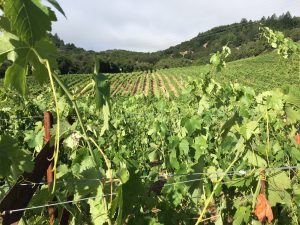
Conversely, rootstock looks a LOT different than wine grape leafs. And one glance below makes that quite clear. For those unfamiliar – most (but not all) wine grapevines, such as Cabernet or Chardonnay, are grafted onto rootstock. The rootstock has an entirely different history of parentage, makes very poor wine, but has characteristics that are very desirable, such as high drought tolerance, or vigor in poor shallow soils. Note in the picture below how round and small the leaves are compared to their Pinot Noir cousins next door. These small rootstock shrubs will someday have a wine variety ‘grafted’ onto them, rendering only the roots underground useful and important to the ultimate wine vine:
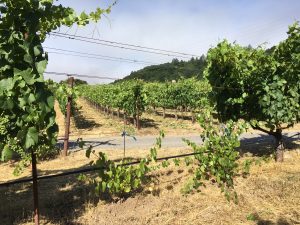
And here in this closeup, you can plainly see that these leaves really do look much different from their Syrah cousins in the background across the road.
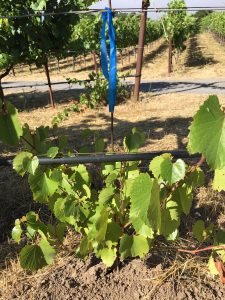
Now compare the above shape, color, and size of the above rootstock leaf with the picture below, and you can now plainly be sure whether you are looking at the leaves of rootstocks or wine grapes!
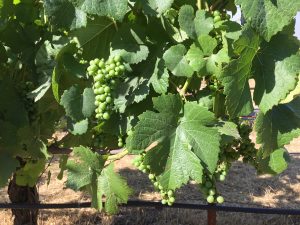
For more information on this topic, see:
This link to grapevine leaf identification:
https://www.wineaustralia.com/getmedia/21669eff-05de-41d9-9ef8-283b1e01edcb/201008-Vine-identification.pdf
And this link about the parentage and application of grapevine rootstocks:
http://www.wonderfulnurseries.com/resources/rootstock-guide.pdf
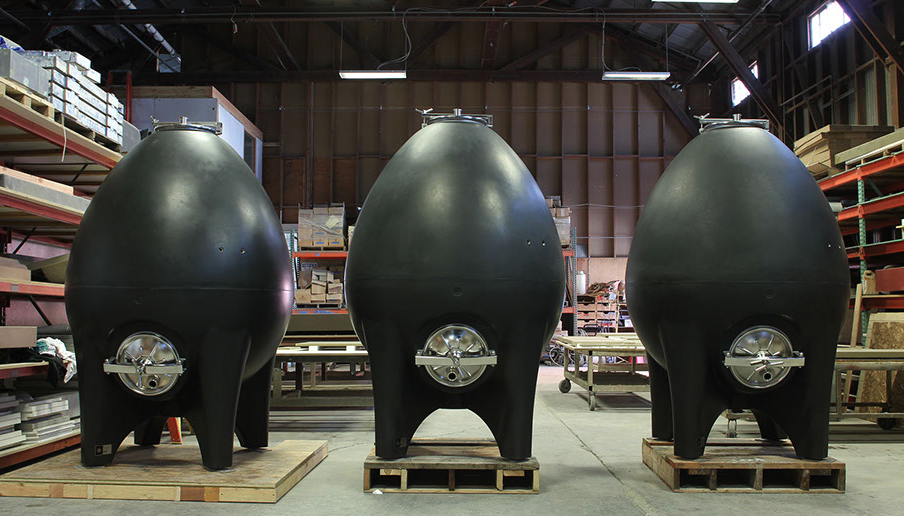
Jul 16, 2017 | Wine
Being the modest guy that he is, he would fight me off from this label, but at age 82 and still very vigorous, Steve Rosenblatt meets the definition of genius. And with his charming and equally accomplished wife Martha, they make quite the dashing yet modest pair. It is a well known story, but when they went to build a house, they were unhappy with the standard choices in hardware and surface finishes. Steve the engineer went to work on that problem. And twenty years later, at his rambling laid-back open-air facility, Sonoma Cast Stone in Petaluma, there is enough smoking hot innovation going on in this facility to compete with Edison, Bell, and Tesla. This includes a new generation of concrete tiles, sinks, tables, and hardware, metal forging, world-renowned concrete wine fermentation tanks in all manner of style, color, and function, oak-barrel-concrete-tank-replacement beta tests, stainless steel fabrications, pumps, hardware, software, calibration and measuring tools, and the list just goes on. Steve is literally the modern day Willie Wonka, and Sonoma Cast Stone is literally the modern day Chocolate Factory. I wish I could divulge more, but suffice it to say there are enough confidential new ideas and technologies to launch a dozen new businesses…
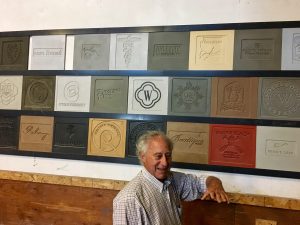
Steve in front of a small portion of the many branded concrete nameplates of wineries he has supplied with all manner of concrete and stainless equipment including Spottswoode, Frog’s Leap, Foley, Harlan, and Cuvaison.
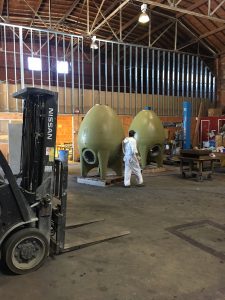
A couple of concrete egg fermentation tanks in the late stages of fabrication.
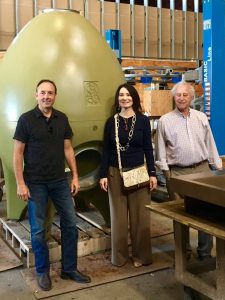
Linda Cano, executive director of the sizzling hot Sonoma Valley Museum of Art, and Steve, join me in front of a newish egg for Cuvaison. I am happily on the board of the Sonoma Valley Museum of Art, and likewise Steve and Martha are ever-reliable supporters. Linda (pictured here), and her fiancé David Keaton (climber of the tallest peaks on every continent, yes, including Everest) joined us on the tour of Sonoma Cast Stone.
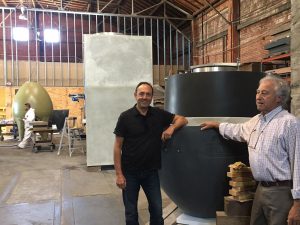
Steve and I are discussing the merits of this particular concrete tank, an absolute beauty in design, functionality, and finish.

Three of my favorites – a trio of deep dark eggs ready to make some inky Sonoma red wine.
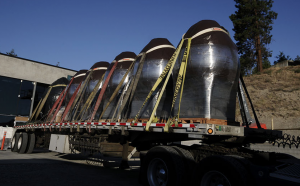
A truckload of beauties headed out the door.
Find more information about these amazing fermentation vessels at:
http://www.concretewinetanks.com
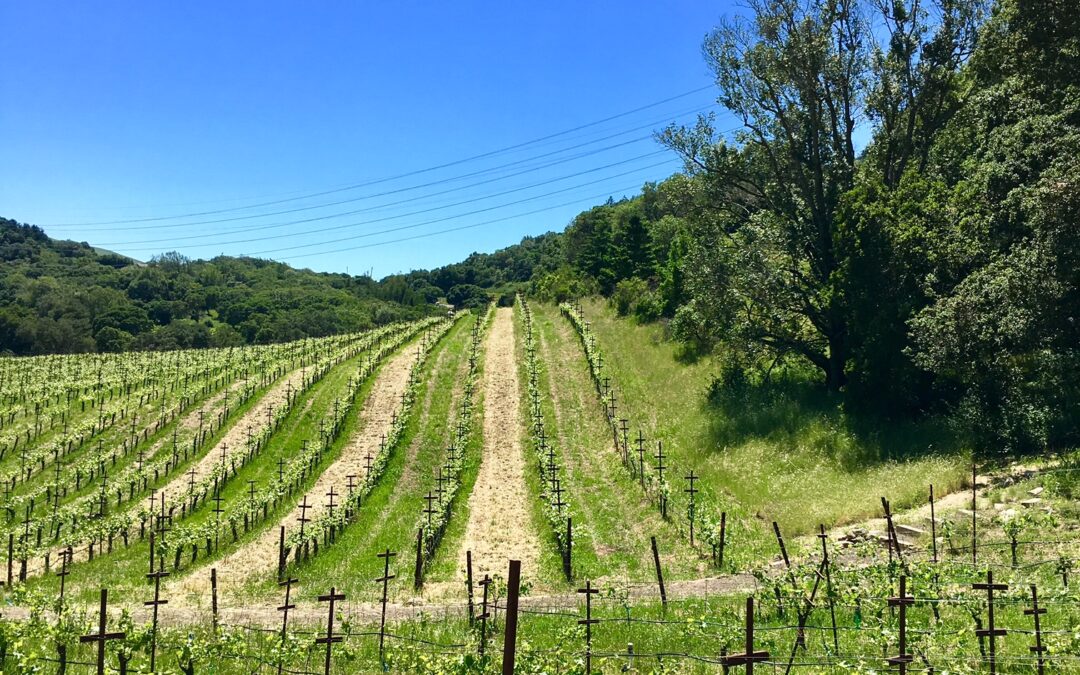
Jul 9, 2017 | Wine
The Kivelstadt vineyard on Bennett Valley Road in Sonoma is a gorgeous 10-acre vineyard, now just reaching 20 years old, and featuring blocks of Pinot Noir, Syrah, and some Viognier (for that classic Rhone-style aromatic ‘seasoning’).
To have forward-thinking clients is a pleasure. And the Kivelstadt’s employ a full time crew, led by Mollyanne Meyn, to care for this rare property. And in addition to very extensive native gardens throughout the larger property, this also includes three unique and carefully designed ‘beneficial insectary plant’ blocks, situated right alongside three important vineyard locations.
Here you see an image of one of the quite purposeful beneficial insectary plant blocks, protected by low stone walls. The plantings are not at all random, or simply for beauty, but is nevertheless gorgeous and includes: Clematis, Yarrow, Coyote Mint, Stinging Nettle, Vetch, and many others. These plants attract insects and encourage insects that are predatory on insects that can be damaging or bring unwanted disease into the grape vines. This approach to farming has been shown over time to reliably reduce unwanted and damaging vineyard pests. This is especially true when compared to vineyard sites that are a pure ‘monoculture’ where nothing but grape vines are allowed to grow, and every living thing except grape vines are plowed, cultivated, sprayed, and killed away, making the vineyard an easy target for bad bugs, which then only leads to more chemical spraying, and so on.
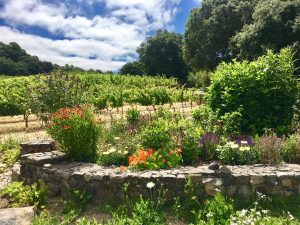
And here is a good perspective of the larger vineyard view. Note also that we have deployed a ‘cover crop’ of beneficial plants in an alternating ‘every other’ vine row basis. This allows us to mow one alley between the vines (which provides physical access to the vines) and leaves the next alley full of beneficial cover crop plants:
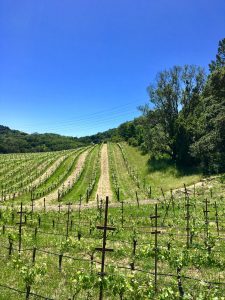
Link to Mollyanne Meyn’s web page
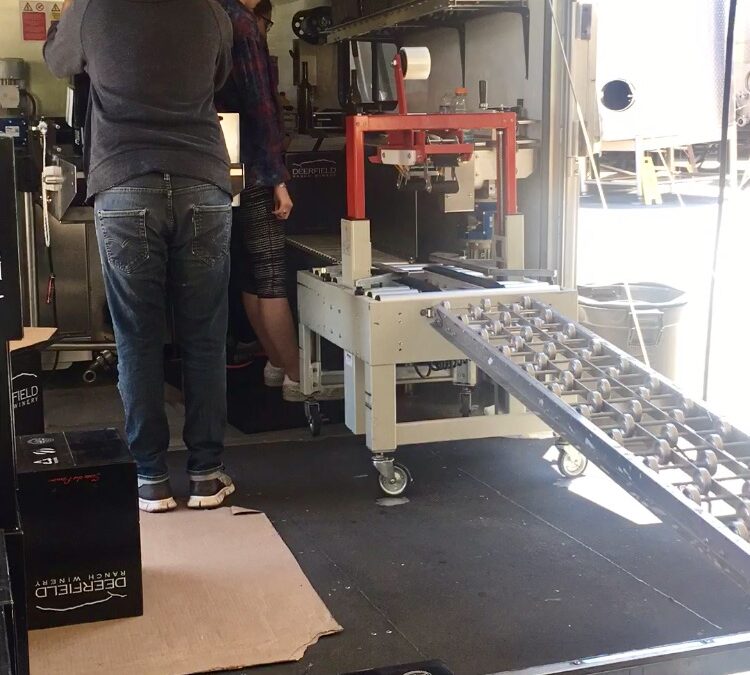
Jul 2, 2017 | Wine
I have some of my client’s wine made at the Deerfield custom crush facility in Kenwood. I stopped by the other day to check on some barrels of 2016 Cab and Syrah. They had a mobile bottling line running under the tent at the crush pad. After watching this video, we all thought (laughing) ‘these are some of the fastest bottling line employees ever!’
Enjoy…
mobile bottling line video





















